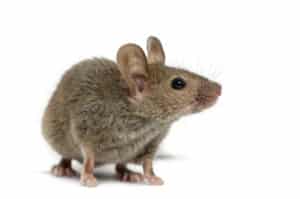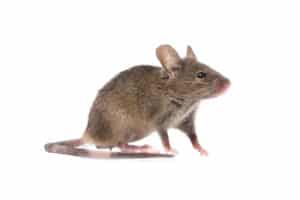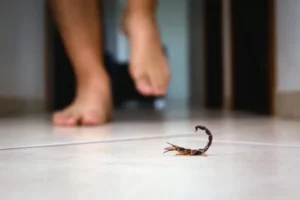Home / Blog / Field Mice vs. House Mice: What’s the Difference?
Field Mice vs. House Mice: What’s the Difference?

Scientifically reviewed by Daniel Baldwin, BCE, CCFS, CP-FS
-Published on May 19, 2023
-Updated on July 13, 2023
If you’ve noticed a small mouse around your home, you could have a house mouse or a field mouse. Understanding the differences between the two may help you understand the pests that are invading your space. In this post, we’ll compare the field mouse vs. the house mouse to help you identify these rodents.
What’s the difference between a field mouse and a house mouse?
House mouse is the common name for the Mus musculus rodent species. This type of mouse tends to enter homes through cracks, gaps, spaces, vents, and plumbing.
Field mouse is a general term for mice that typically live outdoors. Usually, the term refers to the deer mouse, Peromyscus maniculatus. Although finding a field mouse in a house is possible, these rodents typically don’t live in suburban and urban areas. They tend to prefer forests, dense grasslands, and rural regions with farms.
What does a field mouse look like?
The deer mouse type of field mouse usually has a two-toned tail that is dark on top and light on the underside. They also have large rounded ears positioned so that they angle toward the front. On average, a deer field mouse’s size is around 7 inches from the tip of the nose to the end of the tale.

What does a house mouse look like?
The house mouse normally has a nearly hairless tail that is all one color. These rodents’ ears tend to be larger and pointier than a field mouse’s and turn outward rather than inward.
Compared to field mice, house mice usually have smaller bodies and longer tails. While they typically measure around 5 to 7 inches in length, their tails account for about 3 to 4 inches of their size.

What color are field mice and house mice?
House mice are usually solid-colored with light brown or gray fur. Most field mice have two-tone fur. In most cases, their undersides, legs, and feet are white, while the rest of their bodies are tan.
How long do house mice and field mice live?
Generally, field mice can live longer than house mice. The lifespan of a house mouse is around 6 months to 2 years, while the deer mouse can live for up to 7 years. However, field mice are more vulnerable to predators because they live outdoors. As a result, many die within 1 to 3 years after birth.
What attracts field mice and house mice to your house?
House mice and field mice have similar needs and seek places with easy access to shelter, water, and food. A house mouse will look for ways into your home and may decide to stay if it can find foods high in sugar, fat, or protein.
On the other hand, a field mouse will look for areas with lots of vegetation to eat. They like to nest in hidden places like firewood stacks and piles of rocks.
What are the signs of a mouse infestation?
Some signs that a field mouse or house mouse may be living in your home include:
- Tiny droppings
- Chewed-up wood, food packaging, insulation, and other materials
- Scraps of fabrics and paper, which mice could use to line nests
- Musty or foul smells with no apparent source
- Skittering or scratching sounds in the walls, particularly at night
- Pets scratching at the same area of wall, flooring, or cabinetry
How do I get rid of a mouse infestation?
The best way to deal with a mouse infestation is to contact a professional pest control company. Knowledgeable professionals can locate nesting areas, identify nesting points, and then create a treatment plan to address the problem.
You can trust Hawx Pest Control to know where to look for rodents and have the right tools and products to deal with infestations. In addition, our technicians can give you tips on how to keep mice out in the future, and if necessary, we can recommend a maintenance treatment schedule to keep pests at bay going forward.
Related Articles
Visit our blog to learn more.
→





